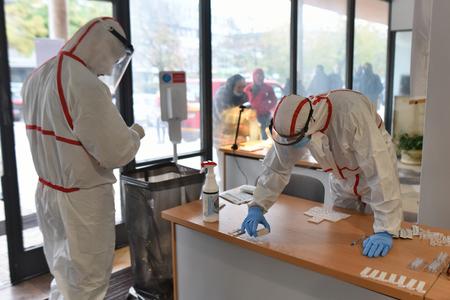In the past two consecutive Fridays, the health minister reported the good news to Slovakia that the epidemic curve broke in early November, as a result of the tightened anti-epidemic measures and mass testing.

While the decline is apparent from the graph of daily new positive cases, experts say and even the government admits that this data has been distorted the past days due to the two rounds of mass testing in Slovakia, and the subsequent introduction of rapid antigen testing sites, where anyone can get a swab free of charge.
The more reliable RT-PCR tests, in contrast, cost €70 per swab if not indicated by epidemiologists or a doctor. The number of conducted tests has dropped after rapid tests were introduced. But the results of the PCR tests are the only ones reported in the official daily stats of the National Health Information Centre (NCZI). These are also the basis for the easing of the rules (7-day average of new daily cases must be no more than 750 for schools, restaurants and other facilities to open).
"The numbers are in a sort of a fog," PM Igor Matovič (OĽaNO) admitted, as quoted by the Denník N daily.
While the Health Ministry is deciding how to report the data, some epidemiologists say that the numbers to watch are the rates of hospitalisations and deaths, and these hardly provide good news for Slovakia.

